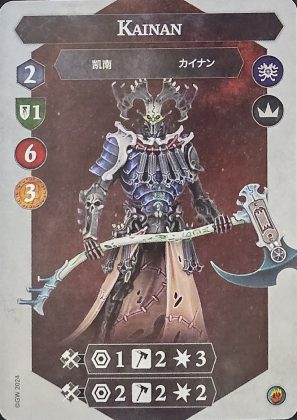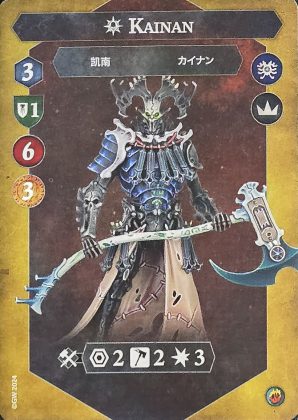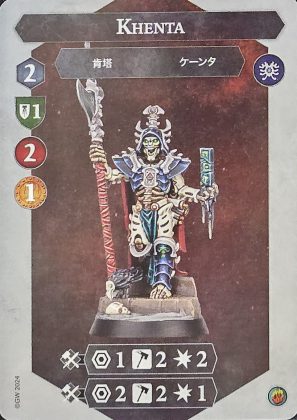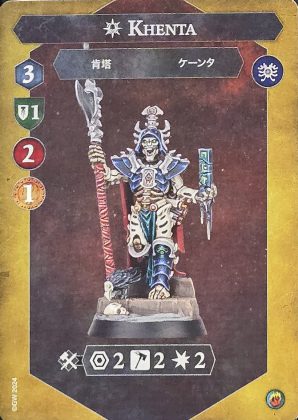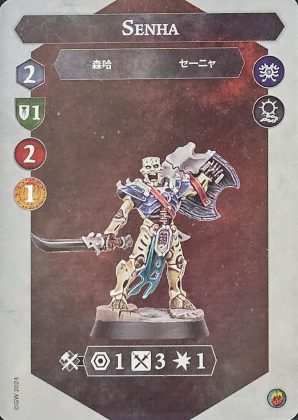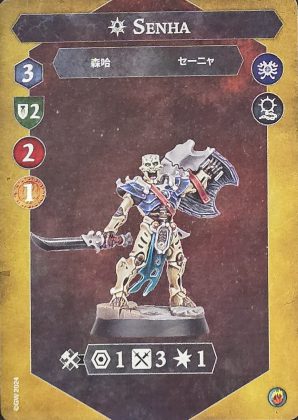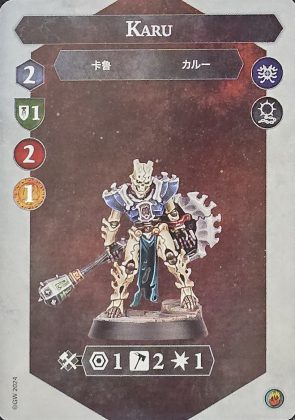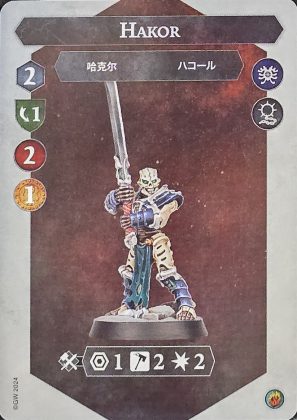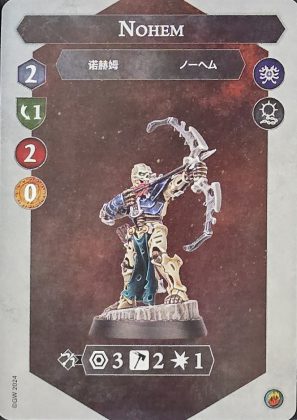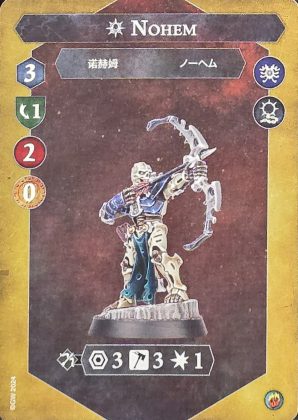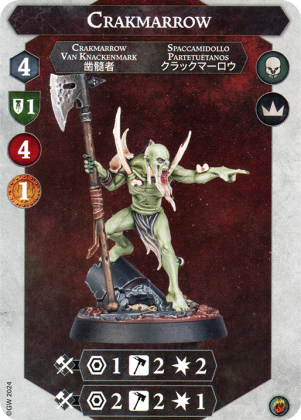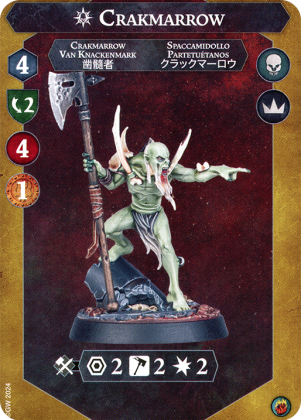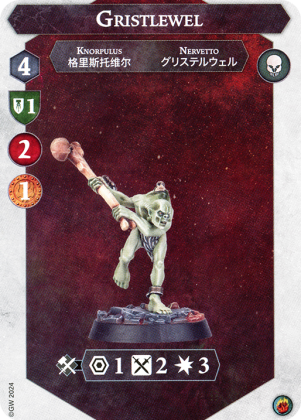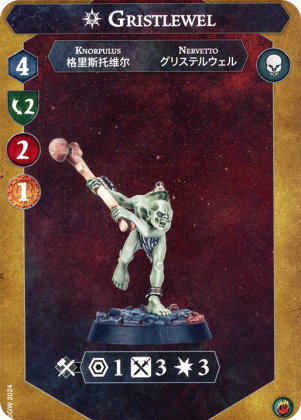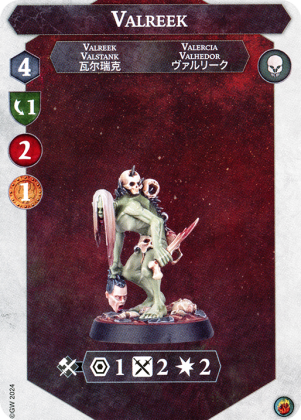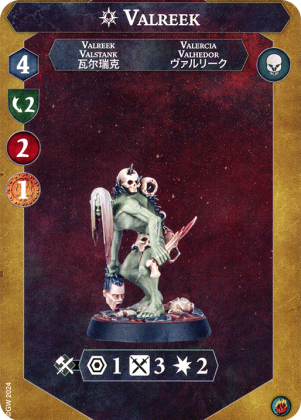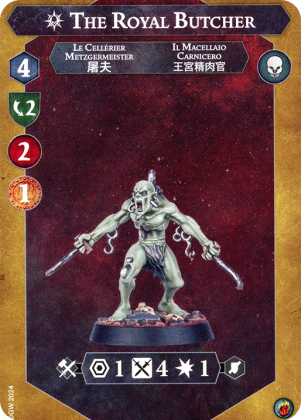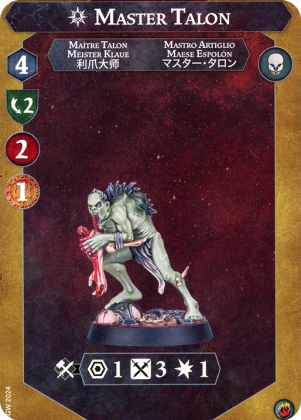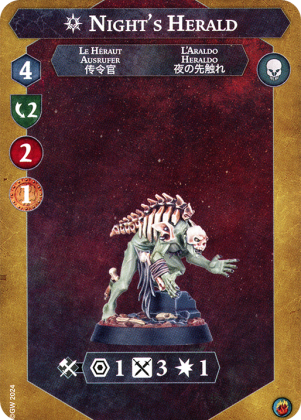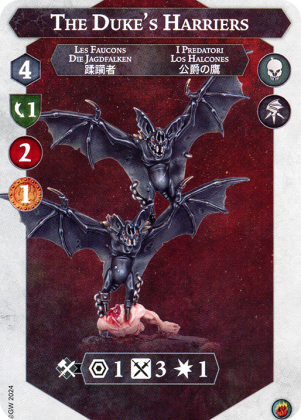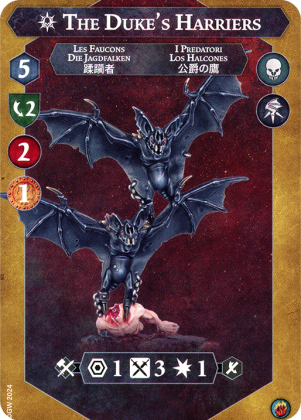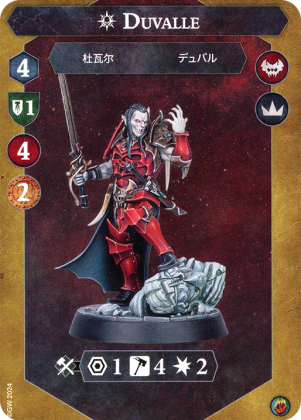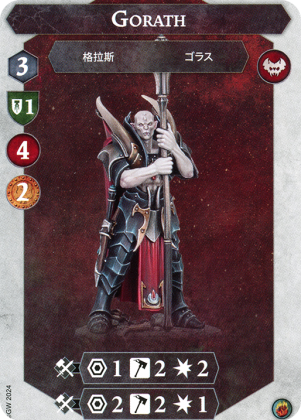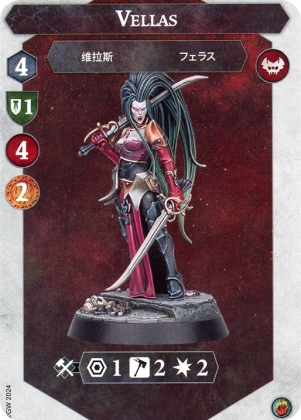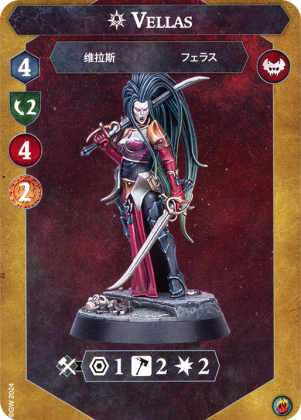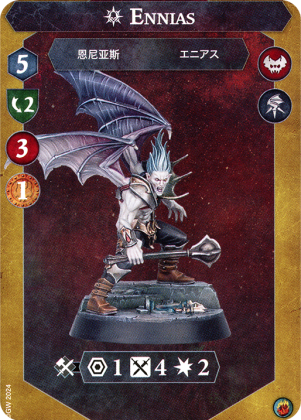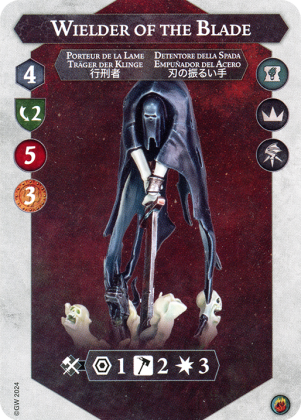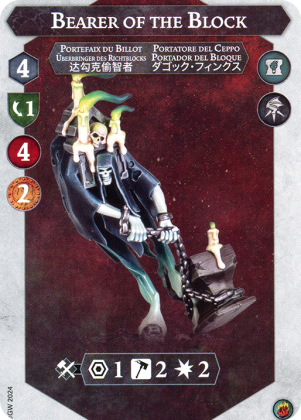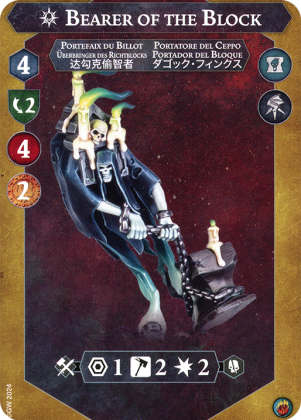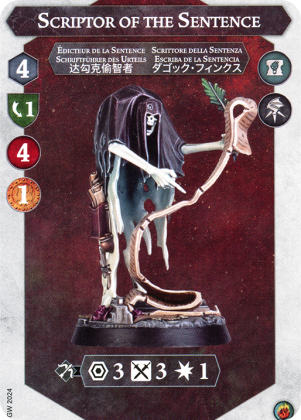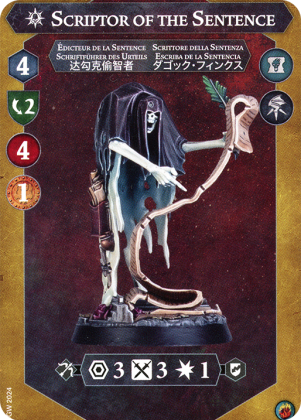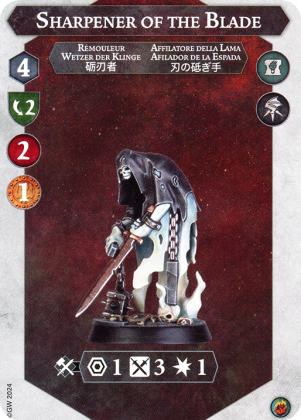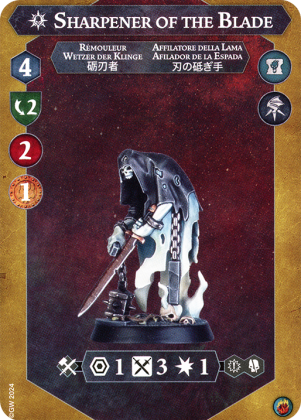It’s another Underworlds preorder day! That means Goonhammer has coverage for a deluge of Games Workshop releases that will be coming your way soon. It feels like we just did this recently, but that’s the new edition rush for you. There are four boxes, each containing four revamped warbands and themed to one of the Age of Sigmar Grand Alliances. We also have two brand new warbands in the Jaws of Itzl and Grandfather’s Gardeners as well as two brand new Rivals decks with Reckless Fury and Wrack & Ruin. That’s 18 warbands, 2 decks, and a lot of new rules to cover!
Before getting into the reviews, if you’re reading this on November 23-24, the World Championships of Warhammer are underway right now, and this year the Underworlds event has streamed coverage! Check it out over on the Mortal Realms YouTube channel. The hosts for the stream are Davy from the What The Hex?! podcast and Mike (aka Fishmode) from the Spent Glory blog and Underworlds Underground podcast. These two are genuinely wonderful dudes with a solid grasp on the game and a great way of explaining what’s going on. Check it out!
When covering the warbands, I’m going to take a look their fighter cards and accompanying warscrolls to go over what sets them apart compared to their contemporaries in the pool of 33 Organized Play legal warbands. If you want to check out the other items being covered today, you can find those articles here:
Despoilers and Daemons: Chaos Warbands
Brutes and Bandits: Destruction Warbands
Heroes and Hunters: Order Warbands
The Jaws of Itzl and Grandfather’s Gardeners
Rivals Decks: Reckless Fury and Wrack & Ruin
Revenants of the Realms: Death Warbands
I’ve raved about how cool Death warbands are in the past. In fact, I did it just a few days ago! I’ll skip the usual raving about bones and jump straight into the warbands.

Kainan’s Reapers are a unique blend of the big bruiser style with the terrifying Kainan and the weak swarm style with all the Morteks who hang out with him. Kainan and his crew come back as a Flex style warband and they’ve had quite a few changes.
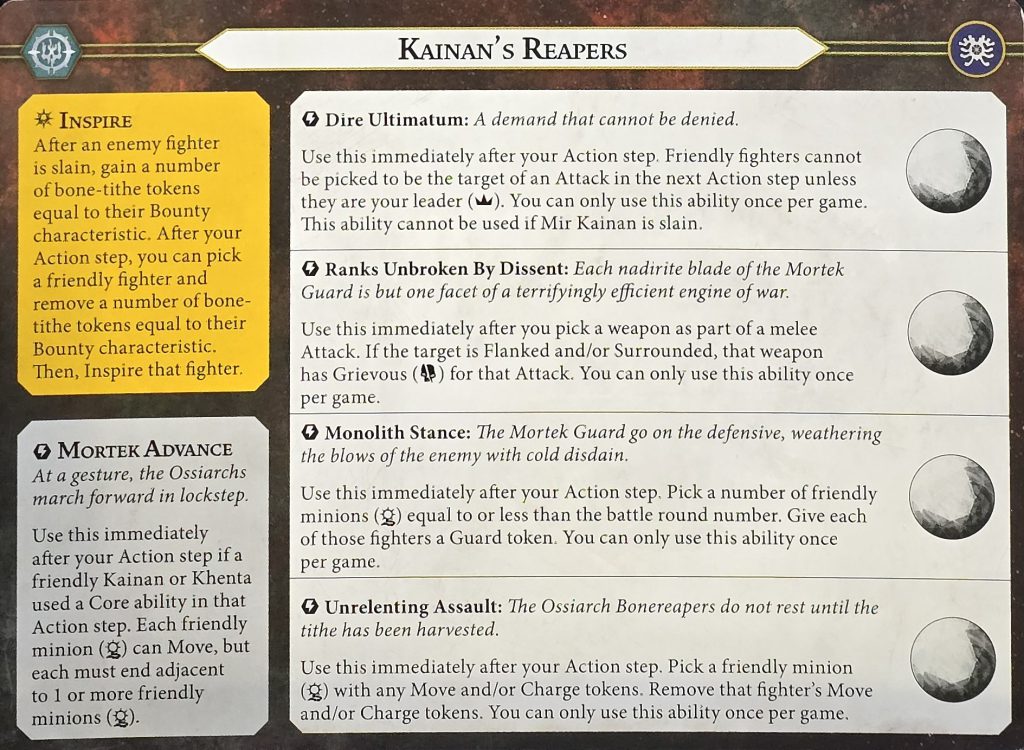
Bone-tithe tokens are still a thing, so Kainan can continue to be the bone IRS. It feels a little odd that the generation of the tokens is described in the inspiration trigger, not its own separate area but whatever. The main break points you’re looking for here are 3 to inspire Kainan, 1 to inspire Khenta and any of the melee minions, and 0 for Nohem the archer. You’ll be able to inspire Nohem after your first turn in every game (unless they’re slain before you get to take a turn), so that’s neat.
Mortek Advance is different this time around, and I really prefer this version because it’s less of a hassle to try and track on the board. Your minions are going to want to hang out together like buddies. The fact that this triggers off of Kainan or Khenta using core abilities means you’ll want to try and avoid charging them out too quickly, and also that any upgrades which grant core abilities have an additional bit of utility for this warband.
Kainan is by far the largest model of this warband, and Dire Ultimatum forces your opponent to go after him. This is a great way to protect your much squishier minions and Khenta, giving them a turn free from being threatened. It’s even better if Kainan happens to be completely out of range of your opponent, so they flat out can’t attack anyone.
Ranks Unbroken By Dissent (what a rad name) will give one of your attacks a nice damage boost provided you can have the target flanked/surrounded. Mortek Advance should make this doable, especially after they inspire for a little more speed. There is already one upgrade (Hidden Aid) that makes your fighter count as flanking adjacent enemies, too. This is limited to melee attacks, so Nohem isn’t going to be eligible (without a weapon upgrade) but it isn’t restricted to minions, so Kainan can use it to whack someone for 4.
Back to minion restricted abilities, Monolith Stance is a minor boost to your Mortek’s survivability. A guard token isn’t going to do a whole lot for fighters sitting on 1 shield, but it’s a free defensive upgrade for the pretty squishy Hakor and Nohem, and both Senha and Karu can make slightly better use of it once they’re inspired. This feels like it’s usually a turn 2 activation since you’d only get the benefit on 1 fighter during the first turn and I’m doubtful turn 3 will roll around and that many minions will still be alive and kicking. Or dead and kicking.
Unrelenting Assault is a way to sneak a charge in with a Mortek that has benefited from Mortek Advance. You do have to telegraph it in advance, since this is done after your own action step which gives your opponent a full turn to respond, but it can allow Hakor to get two charges in during a turn or let Nohem do some scoot-and-shoot shenanigans. Removing charge tokens is an incredibly rare thing to do, but this being limited to your minions keeps it in check.
Kainan is worth 3 bounty while the rest of the warband (minus Nohem) is each worth 1. Nohem drew the short straw and has a bounty of 0 (which is actually great for them!). The bone boys slowed down in this edition. Across the board, they’re starting at 2 move and inspire to 3. That’s pretty terrible, but being able to chain some Mortek Advance uses can help get everyone into position in the first few turns before they start inspiring to 3 move.
Saves are varied across this warband, with the majority starting on 1 shield while Hakor and Nohem start on (and stay on) a measly 1 dodge. Senha and Karu, the two with shields, befittingly inspire up to 2 shields for their saves at least. The warband totals 16 health, 6 of which is greedily hoarded by Kainan himself – the rest of the models all have to make due with 2 a piece which puts them in the range of some of the most frail fighters in the game. With no raise mechanics in place, this feels kind of risky having so many of your fighters being so vulnerable but it is what it is. Getting Karu and Senha inspired early to serve as blockers for your more fragile fighters could be a plan, especially if you don’t particularly need Kainan’s inspired weapon profile off the bat.
Kainan is rocking an improved version of the generic “leader stick” – his has an extra damage on both profiles, and inspires into combining them together for a nice R2/H2/D3 hit. He’ll want flanked/surrounded to land hits more reliably, but that’s kind of what this warband wants to do anyway with the Mortek shuffle. Khenta has the normal “leader stick” (R1/H2/D2 and R2/H2/D1) that also inspires to combine the profiles. Since Khenta is the other model you need alive to utilize Mortek Advance, I’m going to be inclined to keep either him or Kainan back depending on the match up. One of them on the front line supported by the Morteks and the other in the second line, using their reach to poke over the shoulders of the other skeletons.
Senha and Karu are both pretty similar – all you’re getting from inspiring them is an extra save dice, and their attacks aren’t particularly threatening. They could just be ignored by your opponent pretty safely. Hakor is the “hard hitting” Mortek with a decent starting profile that inspires to be tied for the most accurate in the warband. I want to say he feels like your one-shot missile that you’ll fire in, but it’s going to be difficult to do with his slow speed. Finally, we have Nohem who sure does have an uninspired profile, but you’re rarely going to use it. Inspired, you have a pretty accurate ranged 3 archer – the only ranged attack in the warband.
The pings and positional objectives in Wrack and Ruin could be an interesting take; the pings help push the warband’s average damage through to be lethal and get the bone tithe tokens rolling in, while Mortek Advance can help get your fighters into the positions they need to be in to score. You can also get two uses out of Barge this way, but I’m not sure that’s worth the hoops you have to jump through. Reckless Fury can help you lean more heavily on Kainan, increasing his charge range and even letting you dump his charge token onto a Mortek so he can charge again.

Crakmarrow and his loyal followers return, officially embracing their preferred playstyle in the past now that Games Workshop has labeled them a Take and Hold warband.
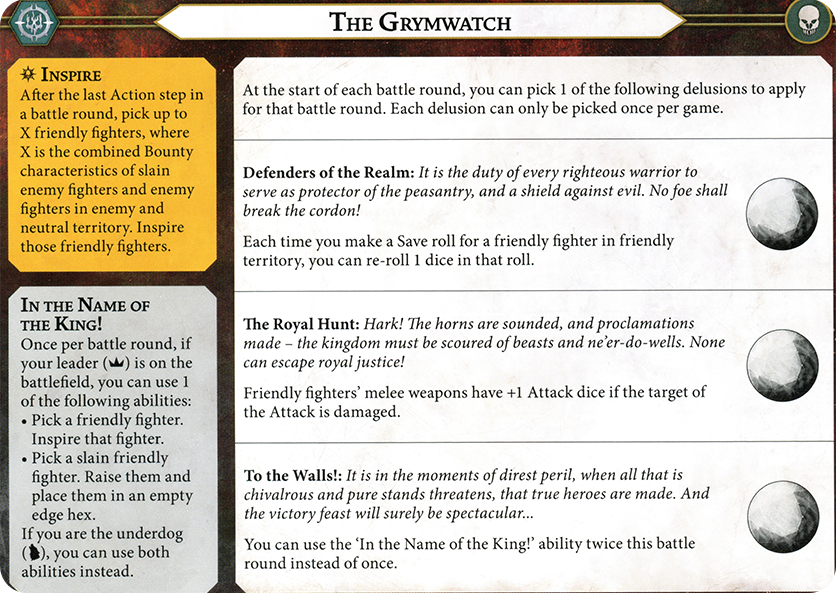
In a shift from their previous iteration, the Grymwatch no longer have an all-or-nothing inspire condition. Unless your opponent fully rushes into your territory and you fail to kill any fighters, it’s likely that at least some of this warband will be inspired starting in the second battle round. This is fortunate since most of the fighters will pick up a more survivable save profile when inspired, and also any raised fighters will have to come back uninspired to start the process all over again.
Speaking of inspiring or raising your fighters, let’s look at In the Name of the King! The written warscroll doesn’t specify a timing, but my guess is it’s meant to be used in the power step in lieu of playing a power card. Being able to just point at a fighter (including Crakmarrow himself) and inspire them during the first round can come in handy, unlocking marginally better attack profiles off the bat (ha… bat). The underdog rider is quite the power boost to this ability – both inspiring and raising a fighter is going to soften the blow of being behind. In fact, it’s going to be dangerous for your opponent to dive into your pile of fairly fragile ghouls first thing in the game. If they take one out and gain the bounty glory, you’re the underdog and can immediately use both modes of this ability. It does require Crakmarrow to be around, though, so be wary of over exposing him.
Technically, the Grymwatch only have one other ability on their warscroll. This unnamed delusions ability requires you to pick one of the three following to apply from the start of a battle round to its end, and they can each only be used once. Planning out the order here is going to be key because you don’t get any do overs.
Defenders of the Realm is going to help with your below average save values. For the more offensive rounds, The Royal Hunt will help increase your accuracy provided you’re going after already damaged enemy fighters. To the Walls! juices up Crakmarrow’s ability to inspire and raise – the dream here is to fire it off twice while you’re the underdog to really extract all the possible value out of it. Unless you’re playing a hyper aggressive opponent who is willing to chew up your ghouls despite knowing the consequences, your first round choice will be between Defenders of the Realm and The Royal Hunt. I’m inclined to go with the former, just to make it marginally harder to take out your fighters – this changes if you have any reliable ways to get damage onto enemy fighters like, say, some ploys from Wrack and Ruin. If that’s the case, you can help beef up the accuracy of Gristlewel and take advantage of that otherwise inaccurate damage 3 attack.
This warband consists of a full 7 fighters, each of which is worth a single bounty. Crakmarrow has the highest health, but he’s no Kainan – 4 is enough to survive most attacks but there are still ways he can get one-shot if you’re unlucky. The remainder of the fighters are comfortably in the one-tap range. Uninspired, nobody’s sporting amazing saves. Crakmarrow and Gristlewel are the best, and a single shield isn’t enough to reliably fend off attacks. Weirdly, every fighter in the warband inspires to 2 dodge. Going off the math someone smarter than me did, this is a very minor downgrade from one block provided you have no supports, but it does increase the usefulness of guard and slightly increases the chances of you getting a Stand Fast result. The ghouls (and bats) are all at least fairly quick, with everyone starting at 4 move and the bats hopping up to 5 while also sporting flying.
For weapon profiles, Crakmarrow has the “leader stick” in both his iterations – R1/H2/D2 and R2/H2/D1 that inspires into a single merged profile of R2/H2/D2. Gristlewel is your attacker with an incredibly inaccurate attack that nevertheless can pack a punch. The profiles rapidly fall off from here, with Valreek sporting an equally inaccurate 2 damage attack and the remainder having low tier single damage attacks. This warband isn’t going to reliably be dishing out pain in combat, but it’s enough to gang up on a weak fighter or two to help guarantee inspirations at the end of the round.
I never was able to get around to testing these out last edition, despite (accidentally) owning two copies of the warband. They have an interesting hold style now, and with their raise (probably) not taking a turn to use, it gives them some flexibility that other raise-centric warbands like Sepulchral Guard and Spiteclaw’s Swarm lack; you can still spend your actions getting onto or fighting over treasure tokens without denying any raises. For deck pairings, I’m interested in trying out Wrack and Ruin for a few reasons. It has some edge-hex-matters objectives going on, and that’s where your raised fighters will pop up. The easy access to pings also can set up The Royal Hunt to kick in earlier than it would normally. Maybe paired with Countdown to Cataclysm for some decent weapons and a defense boost for Crakmarrow in the form of Utter Conviction? Or try for a more reliable hold style with Emberstone Sentinels paired into Pillage and Plunder.

I played quite a bit of Crimson Court games in the tail end of the last edition. I never did particularly well, mind you, but I thoroughly enjoyed the flexibility the warband offered by having just generally good stats and a decent pairing with most strategies. It makes sense that they’re labeled Flex now, but I’m not quite so sure I’ll be enjoying them as much as I did…
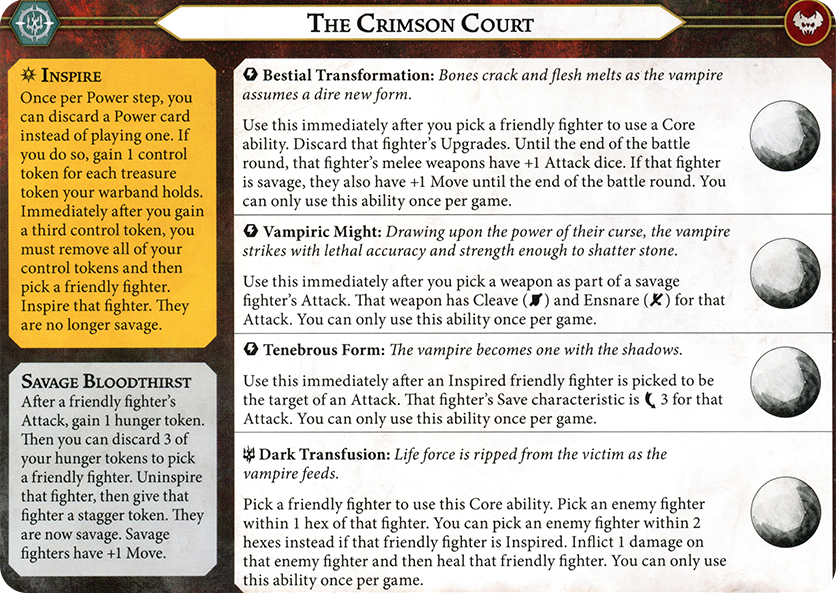
Previously, there was some interesting push-and-pull between letting your vampires inspire or keeping them hungry so they’d go bloodthirsty. This mechanic still exists but in quite a new form. Having your fighters inspire or go savage are both going to require you to spend the relevant tokens, and acquiring the former is going to be pretty costly. Unless you’re able to hold three treasure tokens reliably, it will take at least 2 discarded power cards to inspire a single fighter. And since after you gain your third, you have to discard all of them, there’s no way to bank any or get around wasting some if you generate extra. Holding 3 treasures with a 4 fighter warband is no easy matter, so I’m (for now) assuming that any inspiration is going to cost about 2 power cards. That’s 40% of your starting hand of power cards which, presumably, you included in your deck because you wanted to play them.
Savage Bloodthirst handles the other side of this coin. It’s at least much less demanding – making attacks is a much more appealing thing to do than discarding cards, and they don’t even have to be successful attacks to generate the hunger tokens. Plus, when you discard 3 hunger tokens, you’re not forced to discard all of them. Hooray! … too bad the payoff is staggering your own fighter in exchange for +1 move.
Getting into the once per game abilities, we have Bestial Transformation. This yields increased accuracy for any of your fighters, with the bonus of getting yet even more move if they’re savage. It’s nice that it lasts the entire round instead of just the next attack, so if you can set up well and/or utilize some nice pushes, you can get multiple attacks off with the transformed fighter. Discarding your fighter’s upgrades makes this less appealing to use as the game progresses and your fighters start to suit up, but it’s also going to be difficult to use it early on a savage fighter.
Vampiric Might can only be used by a savage fighter, and it just gives cleave and ensnare to their attack. Remember that you have to pick one or the other to use since they’re weapon ability runemarks, but the correct choice is easy to spot. This is another accuracy boost for the warband’s fighters, provided you’ve made a few attacks already and have generated enough hunger tokens.
Tenebrous Form is conversely limited to inspired fighters and it can be used to swap their save over to 3 dodge immediately when targeted with an enemy attack. It’s less impactful now that critical saves don’t automatically trump non-critical attack results, but it’s still a defensive increase over their base profiles. You can even benefit from guard with it now.
Dark Transfusion is a core ability, so it will take up one of your turns to use. It’s not strictly limited to inspired fighters, but they will be able to better utilize it. The ability to both heal and ping in the same activation is huge, and this is by far the most appealing set of sentences on their warscroll. There’s no restriction on non-vulnerable fighters, so it’s a good way to snipe out a nearly dead enemy.
Pour out a bag of blood for these vampires. To quote a friend, they are in a bad way now. The Crimson Court are one of the few warbands to make the transition into the new edition and wind up with lower stats across all the fighters. The previous edition doesn’t necessarily mean much in how they’ll behave in this one, but it’s hard not to notice after spending countless hours playing games with these.
The bounty distribution is 2/2/2/1 for these vampires. Half your warband is on 3 move uninspired while the other have are on 4. This slowdown might not be as bad as it looks due to the reliability of having some fighters become savage and pick that +1 move back up. Health-wise, the warband as a whole has 15 health – Ennias is the odd one out here at 3 while the rest have 4. This is still tough enough to usually soak a hit without dying, but it’s not as comfortable a buffer as it used to be.
Defense values are mildly above average – Duvalle and Gorath start and stay on 1 shield, Vellas has the ever so small downgrade from 1 shield to 2 dodge, and Ennias goes from the unfortunate 1 dodge to okay 2 dodge. Play will have to be more cagey and careful now since they’re lacking the stats to go toe-to-toe with some of the more threatening fighters in warbands like Gorechosen of Dromm, Morgok’s Krushas, or the Jaws of Itzl.
Offensively, the warband is still fairly similar. Duvalle sports a 2 damage attack that’s far more accurate than average, even moreso once he has exerted enough control to inspire. Gorath’s rocking Ye Olde Leader Staff but gets the very nice upgrade to also having a range 1, 3 damage attack once inspired. Vellas starts with a reasonable R1/H2/D2 attack and… doesn’t change at all when inspired? This feels weird. Her schtick previously was being incredibly accurate with both cleave and ensnare once inspired, but here she gains neither nor any other changes to her weapon profile. At least I won’t be tempted to spend control tokens on her since literally the only change she gets is a marginally worse save when inspired. Finally, Ennias is doing his best impression of Duvalle, but with the lesser accuracy option on the attack dice. On the whole they’re not bad profiles. You have four fighters who can all fairly reliably deliver 2 damage from the first turn of the game. They’re just not going to scale up much from there.
I really don’t know where to start with this warband in terms of deck pairings. If you want to go full send aggro, that can help with making your fighters savage. Blazing Assault and Reckless Fury both can help bring them up to be more threatening, but they won’t reach the output other comparable warbands can. Generating control tokens will require a high degree of focusing on treasure tokens, so you could play with Emberstone Sentinels as the main gameplan and try to score while throwing away your power cards to inspire – it’s less of a raw deal to discard one power card to inspire one fighter, so if you can ever hold three treasures for a power step that sounds potentially worthwhile.
I will admit I am being hard on this warband because I have such fond memories of playing with them. They certainly are not as potent as they used to be, even discounting the previous edition and just comparing them to their peers this time around. Fortunately the models are still some of the best Games Workshop has done in a while, so they’ll at least look nice! In fact, here’s the gorgeous warband which I spent months playing that were painted by Goonhamer’s own Keewa.


Coming from the warband that I ended the edition playing to the warband that I picked up to learn the previous edition, we have our final death warband in this box. Headsmen’s Curse is a Strike playstyle, which was often what people would have pegged them as but it was not in the ABC (Always Be Charging) playstyle that some aggro approaches could take. Headsmen have one single fighter who can deliver massive damage, but you have to do the work to set up for the swings and keep from overextending. But once you have the appropriate support, the Wielder of the Blade can make short work of nearly any fighter out there.
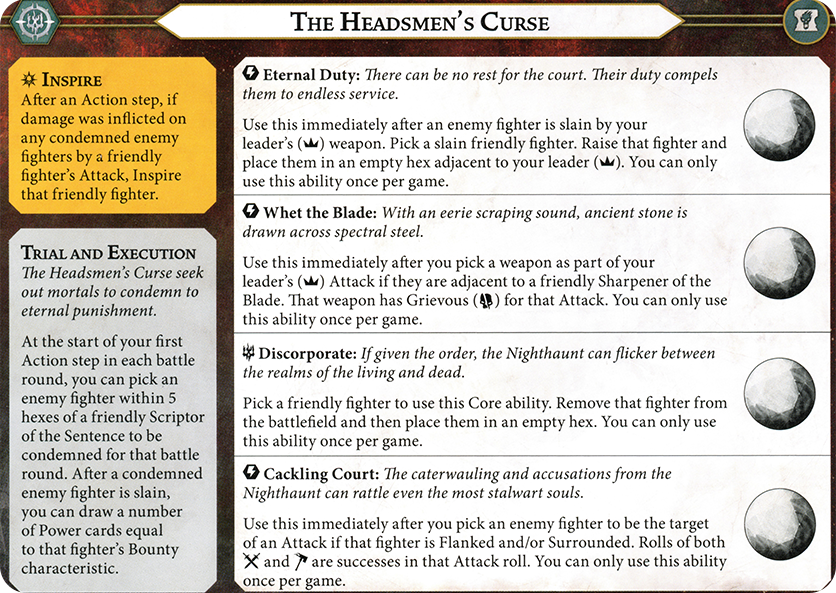
The Headsmen’s Curse is going to telegraph what they are hunting and they get plenty of incentive to follow through. The wording on this inspire condition is going to make it very tricky to squeeze any extra inspirations out – power cards that have your fighters attack won’t even do it because those are made in the power step, not the action step.
Trial and Execution is how the condemned verdicts get out there. Your Scriptor of the Sentence has jumped up in importance tremendously, because their survival and careful positioning is the only way you will be able to condemn your enemies, which is how you’ll inspire and draw those ever so tempting extra power cards. Speaking of drawing power cards, that’s a wonderful incentive to slay your condemned target. Typically, you’ll want to be targeting the biggest threat in the enemy warband anyway to take advantage of the bonkers damage output the Wielder of the Blade has and those threats tend to also be worth the most bounty. This does mean the payout against 7 fighter swarm warbands is going to be lower, and also it may be more difficult to inspire multiple fighters because the condemned will just die to a hit from either the Wielder of the Blade or the Bearer of the Block.
Since the Scriptor of the Sentence is so vital to your gameplan, it’s convenient there is a built in way to return it, or any of your fighters, should they die. Eternal Duty is restricted to your leader making the kill, but honestly that’s what your leader wants to do anyway. Unlike many other warbands with raise mechanics, whichever fighter is brought back will be at full health and ready to go.
Whet the Blade is here just in case the Wielder running around at 4 damage isn’t enough. It’s much trickier to pull off now because you have to get the Sharpener of the Blade up in the thick of things to benefit from the extra damage, but it’s stll extra damage which is a rarity. You want to have flanked/surrounded attacks with the Wielder whenever you can, and if you can manage to use the Sharpener to set those up you will be handsomely rewarded.
The core ability Discorporate is a very flexible teleport. It’s limited to edge hexes, but given the board is more or less a circle and your fighters all sport 4 move with flying there isn’t actually somewhere that your opponent can place a fighter that is out of a charge range after using Discorporate. Much like with Trial and Execution, you’re going to telegraph your plans very clearly when using this, but the raw power is worth it. They really can run, but they can’t hide. It’s also a useful escape ability and a way to get into a certain territory for scoring purposes.
The final ability for this warscroll is Cackling Court and it provides yet another reason to want to push for those flanked/surrounded situations. Having a surrounded enemy in this case is honestly just ridiculous. Ever face of the attack dice will count as a success if you can pull that off. Even with just flanked, every dice rolled has an 83% chance of being a success. This is a great way to combat the main weakness of poor accuracy on these fighters.
The bounty split here is 3/2/1/1 with the emphasis on your leader, then the Bearer of the Block. Defensively, these aren’t exactly glass cannons. The Wielder is sporting a Stormcast worth of health and an adequate 2 dodge. Both the Bearer and the Scriptor are a step down in health as well as save, but at least the latter improves when inspiring. The squishy little Sharpener is doing its best with 2 dodge and 2 health.
The weapon profiles are what this warband is known for. The Wielder starts on a nice R1/H2/D3 – that’s a hefty punch to start the game off with, and inspiring ups the damage without the use of grievous. This means you can still get up to 5 damage swings using various upgrades, ploys, or the Sharpener. The accuracy is always an issue, though. Hammers are only a 50% chance of success on their own, and rolling 2 still gives you a chance to whiff either from your own rolls or your opponent matching you with their saves. Extra dice, rerolls, and flanked/surrounded are vital here.
The Bearer of the Block can be utilized as a backup bonker, but they’ve been toned down a little bit in this edition. R1/H2/D2 is fairly average, and inspiring does boost that up to 3, but it does so by adding grievous which means you won’t be able to stack any other grievous effects. The Bearer strangely has no specific use in this warband. It’s not even called out on the warscroll in any way, so it exists as nothing more than a fall back damage dealer if your leader dies and as a decent flanked/surrounded helper now.
The Scriptor’s ranged profile stays consistent with a fairly reliable damage 1 ranged attack. Inspired, this attack picks up stagger which can be used to help set up the execution turns.
The Sharpener’s weapon is probably going to get more use now than it did in the past. It can no longer sit in the back but must get up in the brawl alongside the Wielder if it wants to use the Whet the Blade ability – if the Wielder’s soon-to-be target is unable to escape, you could charge the Sharpener in to maybe chip a point of health off the target and also offer up the grievous bonus for the Wielder on the next turn. Otherwise, since this attack profile isn’t too impressive, you’ll probably be shoving it around with some pushes.
On a side note, I do like how these fighters all kept their long names that are just titles. Some other warbands had their names trimmed down, but you can still relish saying, “I attack with the Wielder of the Blade, supported by the Bearer of the Block!”
I am 100% rolling with Blazing Assault to start with. That deck offers increased accuracy in the form of ploys and upgrades, plenty of positional tricks, objectives that want you to attack, and defensive boosts to keep your somewhat fragile fighters around for longer. For the additional deck in Nemesis, Reckless Fury might be dipped into, but not for too many of the “charge tokens matter” suite of cards. It has a few nice pushes, but also the ploy Get It Done which can allow for two charges with the Wielder in one round, and Push Through which can do the same to the rest of the warband.
That’s it for the Death warbands released in Revenants of the Realms. Check out the rest of Goonhammer’s coverage if you want to see what else is in this massive drop of Underworlds content!
Despoilers and Daemons: Chaos Warbands
Brutes and Bandits: Destruction Warbands
Heroes and Hunters: Order Warbands
The Jaws of Itzl and Grandfather’s Gardeners
Rivals Decks: Reckless Fury and Wrack & Ruin
Have any questions or feedback? Drop us a note in the comments below or email us at contact@goonhammer.com. Want articles like this linked in your inbox every Monday morning? Sign up for our newsletter. And don’t forget that you can support us on Patreon for backer rewards like early video content, Administratum access, an ad-free experience on our website and more.

